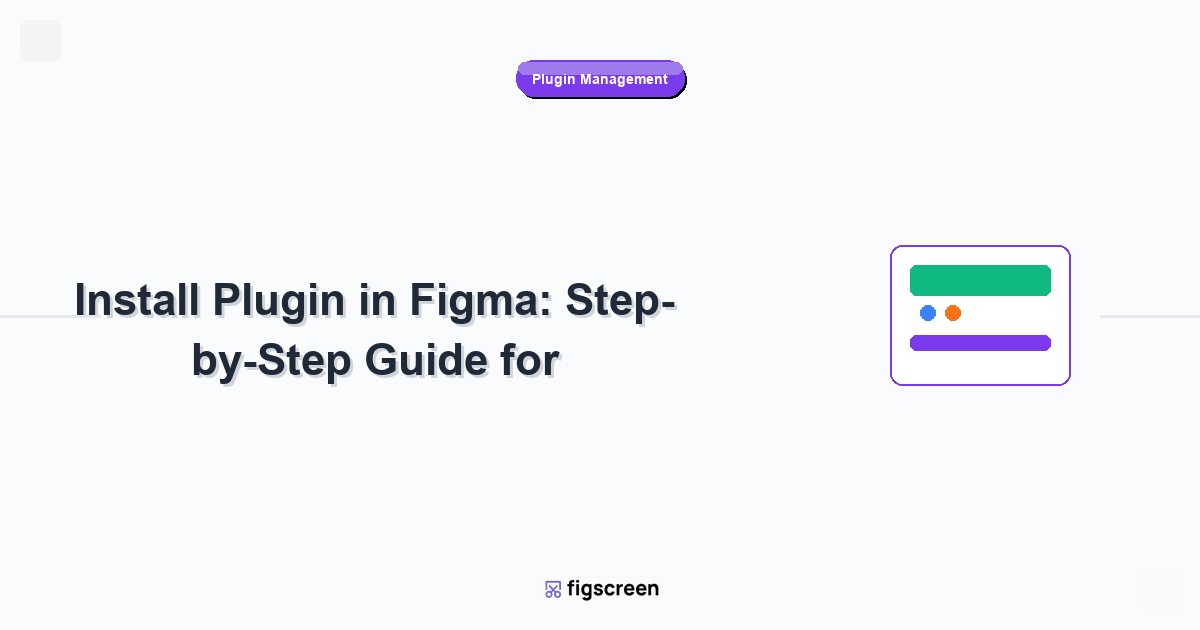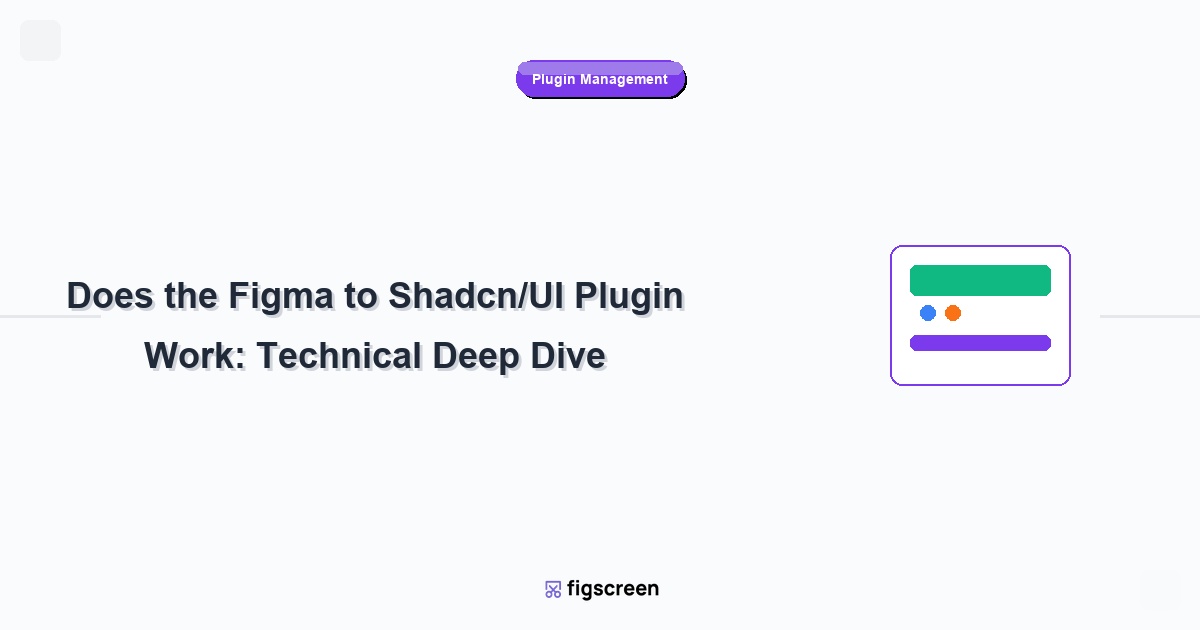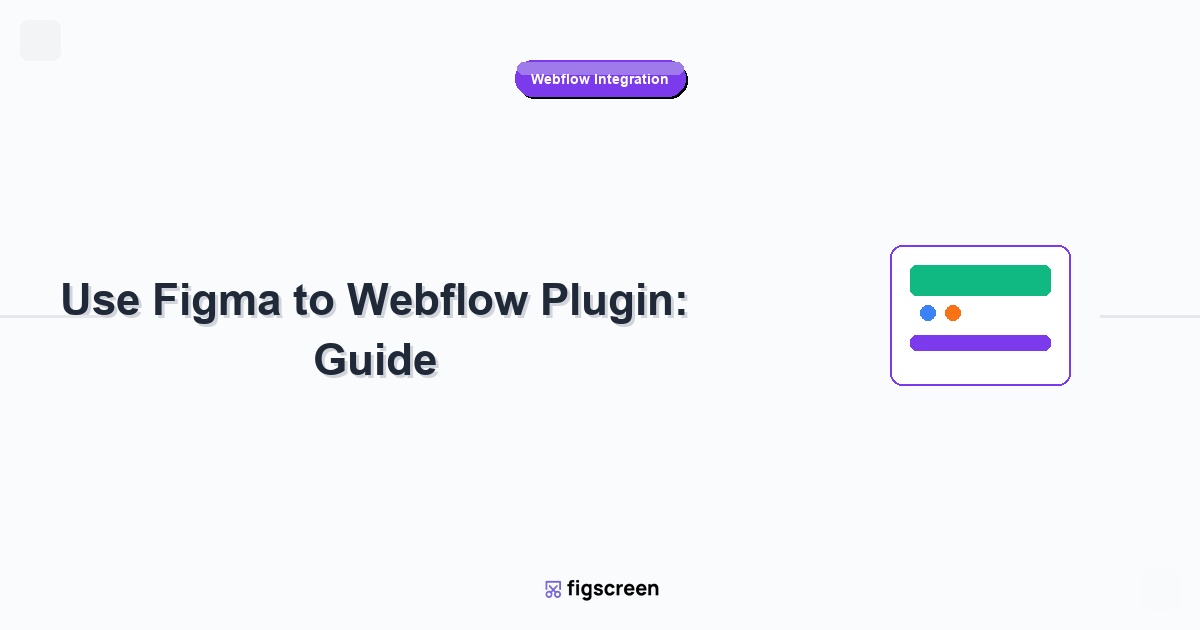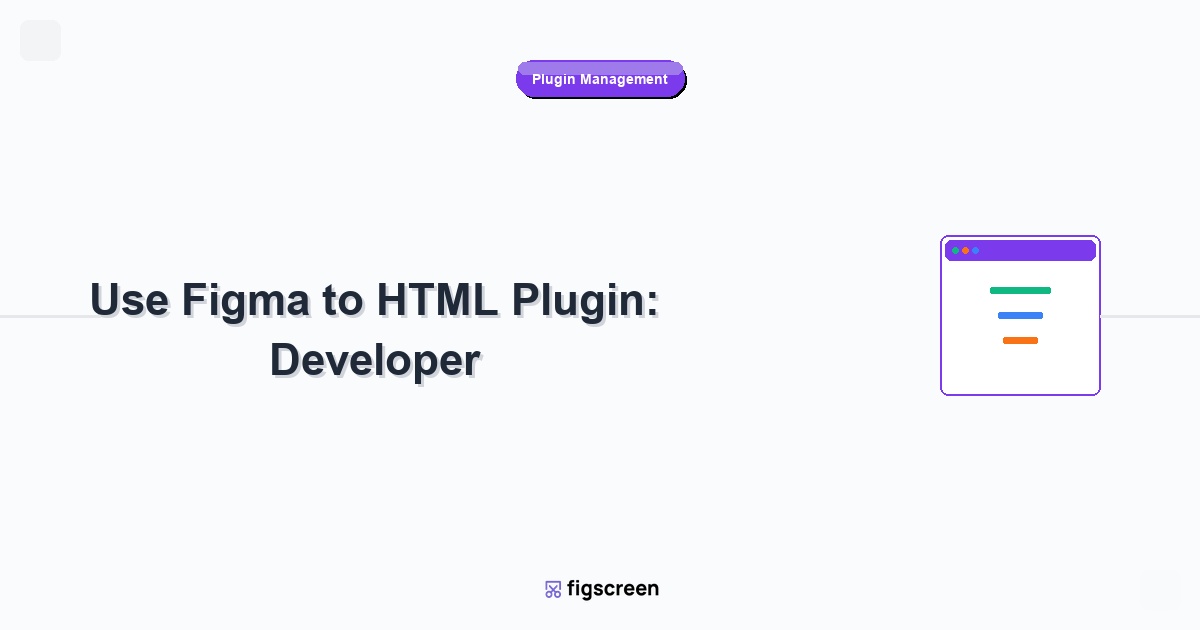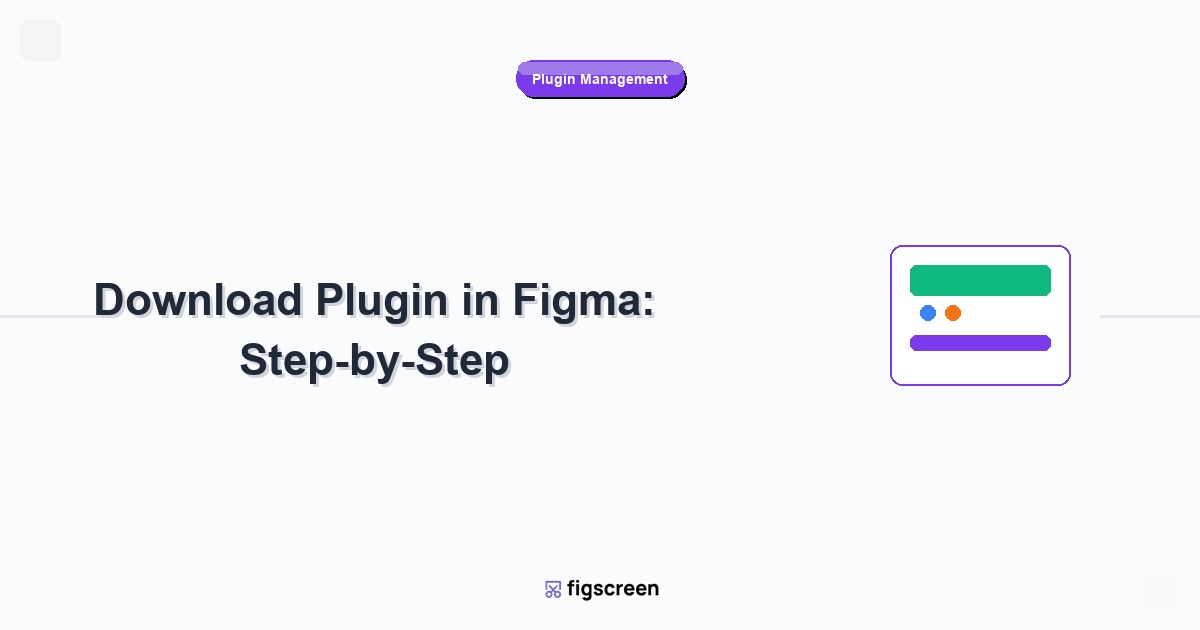Installing Figma plugins has been completely transformed with the UI3 interface update in 2025. The installation process is now more streamlined and accessible, but the interface changes mean previous tutorials are outdated. This guide covers the current installation method and best practices for managing your plugin ecosystem.
What Changed in Figma’s Plugin Installation (2025 Update)
Figma’s UI3 update fundamentally redesigned how users access and install plugins. The key changes include:
- Actions Menu Relocation: The “Resources” button was renamed to “Actions” and moved from the top header to the bottom toolbar
- Streamlined Plugin Discovery: The “Plugins & widgets” tab now serves as the primary entry point for both installed plugins and community discovery
- Integrated Search: Plugin search now queries the Figma Community directly within the interface
- Simplified Installation: The installation process is reduced to a single “Save” button click
- Enhanced Plugin Management: Better organization and access to installed plugins through contextual menus
Important: This guide reflects the current 2025 interface. If you’re using an older version of Figma, the interface may appear different. Update your Figma app to access the latest features.
Step-by-Step Installation Process
1Open a Figma File
Plugin installation requires an active Figma file. Open any existing project or create a new file. Plugins are contextual tools that work within design projects, so you need an active workspace to access the plugin system.
💡 Why You Need an Open File
Figma plugins are designed to work within the context of design files. They need access to design elements, layers, and the canvas to function properly. You can’t install plugins from the Figma home screen or empty workspace.
2Locate the Actions Button
Find the Actions button in the bottom toolbar of your Figma interface. This circular icon has replaced the previous “Resources” button and now serves as your gateway to plugins, widgets, and other Figma tools.
The Actions button is located:
- Desktop App: Bottom toolbar, typically on the right side
- Web Browser: Bottom toolbar, consistent with desktop placement
- All Platforms: Available in the same location regardless of operating system
3Access Plugins & Widgets Tab
Click the Actions button to open the actions panel. At the top of this panel, you’ll see several tabs. Click on “Plugins & widgets” to access the plugin ecosystem.
If this is your first time accessing plugins, the interface will display:
- Suggested plugins: Curated recommendations based on popular and useful plugins
- Search functionality: Direct search that queries the Figma Community
- Quick access: Recently viewed or trending plugins
4Search for Your Plugin
Use the integrated search functionality to find the specific plugin you want to install. The search queries the Figma Community in real-time, providing immediate results.
Search Tips for Better Results:
- Use specific names: Search for exact plugin names when you know them
- Try category keywords: Terms like “icons,” “wireframe,” or “export” help find relevant plugins
- Browse suggestions: Don’t overlook the suggested plugins – they’re often high-quality options
- Check ratings and reviews: Look for plugins with good community feedback
5Install the Plugin
Once you’ve found your desired plugin, installation is straightforward:
- Click on the plugin to view its details and description
- Review the plugin’s capabilities and requirements
- Click the “Save” button to install the plugin
- The plugin immediately becomes available in your “Saved plugins” list
No Restart Required: Unlike many desktop applications, Figma plugins install instantly without requiring an application restart. You can start using the plugin immediately after installation.
Accessing Your Installed Plugins
After installation, you can access your plugins through multiple methods:
Method 1: Right-Click Context Menu
The most common way to access plugins during active design work:
- Right-click anywhere on the Figma canvas
- Select “Plugins” from the context menu
- Choose from your “Saved plugins” list
- The plugin opens immediately in the current file
Method 2: Actions Menu Access
Access plugins through the same Actions menu used for installation:
- Click the Actions button in the bottom toolbar
- Navigate to the “Plugins & widgets” tab
- Your saved plugins appear at the top of the list
- Click any saved plugin to launch it
Method 3: Keyboard Shortcuts
For frequently used plugins, you can often access them via keyboard shortcuts:
- Windows/Linux: Ctrl + Alt + P opens the plugin search
- Mac: Cmd + Option + P opens the plugin search
- Type the plugin name and press Enter to launch
Essential Plugins to Install in 2025
Based on current workflows and community recommendations, here are must-have plugins for different use cases:
Design-to-Code Workflows
- Figma to Webflow: Official plugin for seamless website creation
- Locofy: Advanced HTML, React, and Vue code generation
- Anima: Comprehensive design-to-code with interaction support
- Builder.io: Visual development platform integration
Design Enhancement
- Figma AI: Built-in AI features for image editing and content generation
- Unsplash: High-quality stock photos directly in Figma
- Iconify: Massive icon library with search and customization
- Content Reel: Realistic content and data for prototypes
Productivity Tools
- Figscreen: High-quality website screenshots for design research
- Autoflow: Automatic user flow diagram generation
- Figma to Notion: Documentation and handoff automation
- Design Lint: Automated design system compliance checking
Component Systems
- Shadcn/UI: Modern component system integration
- Material Design: Google’s design system components
- Ant Design: Enterprise-focused component library
- Chakra UI: Simple and accessible component system
Plugin Management Best Practices
Organizing Your Plugin Library
As you install more plugins, organization becomes crucial:
Regular Cleanup
- Review quarterly: Assess which plugins you actually use
- Remove unused plugins: Declutter your saved plugins list
- Update regularly: Ensure plugins have the latest features and bug fixes
- Test new versions: Some plugin updates change functionality significantly
Workflow Integration
- Create plugin workflows: Chain plugins together for complex tasks
- Document useful combinations: Share effective plugin sequences with your team
- Set up shortcuts: Learn keyboard shortcuts for frequently used plugins
- Customize plugin settings: Configure plugins to match your workflow preferences
Team Plugin Management
For design teams, coordinated plugin usage improves collaboration:
Standardization
- Create approved plugin lists: Establish team standards for plugin usage
- Share plugin configurations: Ensure consistent settings across team members
- Document plugin workflows: Create guides for team-specific plugin usage
- Regular team reviews: Discuss new plugins and workflow improvements
Security Considerations
- Vet plugins before installation: Review plugin permissions and developer reputation
- Check update policies: Understand how plugins handle updates and data
- Monitor plugin permissions: Be aware of what data plugins can access
- Follow company policies: Adhere to organizational guidelines for third-party tools
Troubleshooting Common Installation Issues
Plugin Won’t Install
If you’re having trouble installing a plugin:
Browser-Related Issues
- Clear browser cache: Outdated cache can interfere with plugin installation
- Disable browser extensions: Ad blockers or security extensions may block plugin installation
- Try incognito mode: Test installation in a private browsing window
- Switch browsers: Chrome generally has the best Figma plugin compatibility
Account and Permission Issues
- Check account permissions: Ensure your Figma account has plugin installation privileges
- Verify team settings: Organization admins may restrict plugin installations
- Sign out and back in: Refresh your authentication with Figma
- Contact team admin: Request plugin installation permissions if restricted
Plugin Won’t Load
When installed plugins fail to launch:
System and Performance Issues
- Close other applications: Free up system memory for plugin operation
- Restart Figma: Fresh application start can resolve loading issues
- Check internet connection: Many plugins require internet access to function
- Update your system: Ensure your operating system and browser are current
Plugin-Specific Issues
- Check plugin requirements: Some plugins have specific system or browser requirements
- Review plugin documentation: Look for known issues or setup requirements
- Contact plugin developer: Report persistent issues to the plugin creator
- Try alternative plugins: Use similar plugins if one consistently fails
Advanced Plugin Installation
Development Plugins
For developers creating or testing plugins:
Local Plugin Installation
- Access Plugins > “Development” from the right-click menu
- Click “Import plugin from manifest”
- Navigate to your plugin’s manifest.json file
- Select the file to install the development plugin
Plugin Development Workflow
- Hot reloading: Development plugins automatically restart with code changes
- Console debugging: Use browser developer tools for plugin debugging
- Testing environment: Create dedicated files for plugin testing
- Version management: Track plugin versions during development
Enterprise Plugin Management
Large organizations may have additional considerations:
Administrative Controls
- Plugin approval workflows: IT departments may require plugin vetting
- Security assessments: Enterprise security teams may evaluate plugin risks
- Deployment automation: Some organizations automate plugin deployment
- Usage monitoring: Track plugin usage across teams and projects
Staying Updated with Plugin Ecosystem
Community Resources
Stay informed about new and updated plugins:
- Figma Community: Browse the official plugin marketplace regularly
- Design newsletters: Subscribe to design-focused publications
- Social media: Follow plugin developers and design communities
- Figma events: Attend virtual events and conferences for plugin updates
Plugin Updates
Keep your plugins current with these practices:
- Automatic updates: Most plugins update automatically in the background
- Release notes: Read plugin update notes for new features and changes
- Beta testing: Participate in plugin beta programs when available
- Feedback provision: Report bugs and suggest features to plugin developers
Integration with Design Workflows
Effective plugin usage extends beyond installation to workflow integration:
Workflow-Specific Plugin Combinations
UX Research Workflow
Combine these plugins for comprehensive user research:
- Figscreen: Capture competitor websites and reference materials
- Maze: User testing and heatmap integration
- UsableWeb: Accessibility and usability checking
- User Persona: Persona creation and management
Design System Workflow
Essential plugins for design system management:
- Design Lint: Automated consistency checking
- Style Organizer: Design system organization and cleanup
- Component Utilities: Advanced component management
- Token Studio: Design token management and sync
Development Handoff Workflow
Streamline designer-developer collaboration:
- Figma to Code plugins: Various HTML generation options
- Zeplin: Design specs and asset delivery
- Avocode: Code generation and collaboration
- Figma Dev Mode: Built-in developer tools and specs
Conclusion
Installing plugins in Figma’s 2025 interface is more streamlined than ever, but understanding the new UI3 changes is crucial for efficient workflow management. The Actions menu consolidates plugin access, while the integrated search makes discovery seamless.
Remember that effective plugin usage goes beyond installation. Organize your plugin library, stay updated with new releases, and integrate plugins thoughtfully into your design workflows. The right combination of plugins can significantly enhance your productivity and design capabilities.
As the Figma plugin ecosystem continues growing, regular evaluation and optimization of your plugin setup will ensure you’re always working with the best available tools for your specific needs.
🎯 What’s Next?
Now that you’ve mastered plugin installation:
- 🏠 Learn the Figma to Webflow workflow for website creation
- 💻 Explore HTML generation plugins for custom development
- ⚡ Discover modern component systems like Shadcn/UI
